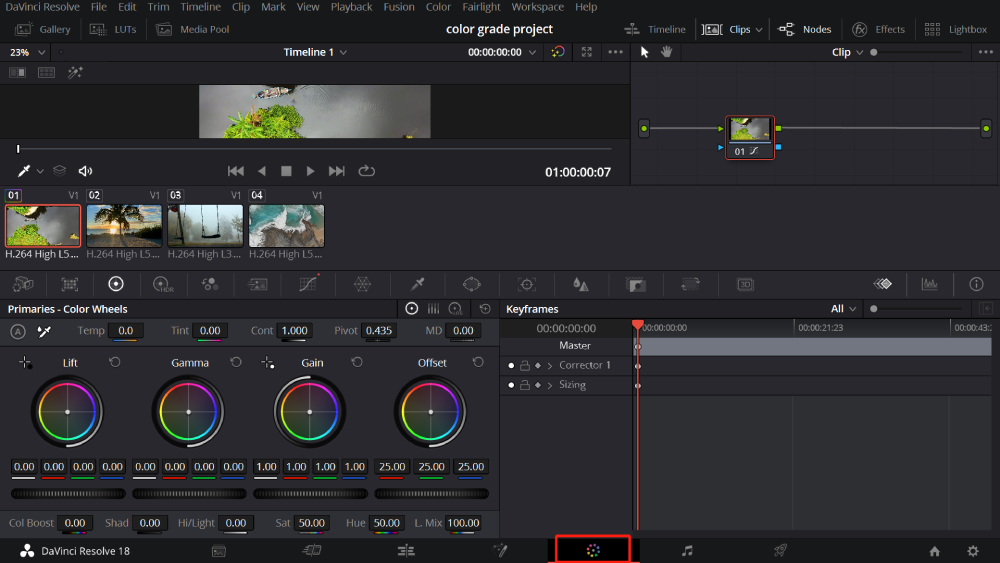Color Grading Mastery: Unlocking the Potential of DaVinci Resolve’s Powerful Tools

In the world of filmmaking and video production, color grading stands as one of the most essential and impactful processes. It’s the art of enhancing and manipulating the color and tone of a visual project to evoke specific emotions, create atmosphere, and establish a cohesive aesthetic. Among the myriad of software options available for color grading, DaVinci Resolve stands out as an industry-leading platform renowned for its powerful tools, robust features, and unparalleled capabilities. In this comprehensive guide, we delve deep into the realm of color grading mastery, exploring the extensive toolkit offered by DaVinci Resolve and uncovering the secrets to achieving stunning visual results.
Introduction to DaVinci Resolve: A Brief Overview
Originally developed by Blackmagic Design as a professional color grading software, DaVinci Resolve has evolved into a comprehensive post-production solution that encompasses editing, visual effects, motion graphics, and audio post-production alongside its renowned color grading capabilities. With each iteration, DaVinci Resolve has expanded its feature set and refined its interface to cater to the diverse needs of filmmakers, editors, and content creators around the globe.
At the heart of DaVinci Resolve lies its powerful color grading tools, which are revered for their precision, flexibility, and efficiency. Whether you’re a seasoned colorist or a newcomer to the world of color grading, DaVinci Resolve provides everything you need to elevate your projects to the next level and achieve professional-grade results.
Understanding the Color Grading Process
Before diving into the specifics of DaVinci Resolve’s tools and features, it’s crucial to understand the fundamental principles of color grading. At its core, color grading involves manipulating three primary aspects of an image: hue, saturation, and luminance. By adjusting these parameters, colorists can dramatically alter the mood, tone, and visual impact of a scene, transforming a bland image into a cinematic masterpiece.
In addition to basic color adjustments, color grading also encompasses more advanced techniques such as color correction, color matching, and creative grading. Color correction involves balancing the color and exposure of individual shots to ensure consistency and accuracy throughout a project, while color matching aims to achieve visual continuity between different shots or scenes. Creative grading, on the other hand, allows colorists to apply stylistic effects, creative looks, and artistic flourishes to enhance the storytelling and evoke specific emotions.
Exploring DaVinci Resolve’s Color Grading Tools
DaVinci Resolve boasts an extensive array of color grading tools and features, each designed to facilitate precise control over every aspect of the grading process. From primary color correction to advanced secondary grading and everything in between, DaVinci Resolve offers a comprehensive suite of tools that empower colorists to bring their creative vision to life.
One of the standout features of DaVinci Resolve is its node-based color grading system, which provides unparalleled flexibility and efficiency when it comes to manipulating color and applying effects. With nodes, colorists can create complex grading setups, layer multiple adjustments, and seamlessly blend different grades to achieve the desired look. Additionally, DaVinci Resolve’s advanced tracking and masking capabilities allow for precise targeting of specific areas within a frame, enabling intricate adjustments and localized corrections.
Mastering Color Grading Techniques
In the pursuit of color grading mastery, it’s essential to familiarize oneself with a variety of grading techniques and approaches. Whether you’re aiming for naturalistic realism, stylized aesthetics, or something in between, DaVinci Resolve offers the tools and flexibility to realize your creative vision.
One of the most fundamental techniques in color grading is the use of primary color wheels, which allow colorists to adjust the overall balance of an image by manipulating the shadows, midtones, and highlights independently. By mastering the art of primary grading, colorists can achieve accurate color reproduction, optimal contrast, and pleasing skin tones, laying the foundation for more advanced grading techniques.
In addition to primary grading, DaVinci Resolve offers a range of secondary grading tools that enable targeted adjustments to specific areas of an image. This includes selective color correction, which allows colorists to isolate and manipulate individual colors within a shot, as well as advanced grading effects such as vignettes, film grain, and lens flares. By combining primary and secondary grading techniques, colorists can achieve precise control over every aspect of the image, creating visually stunning results that captivate audiences and elevate the storytelling.
Conclusion: Empowering Creativity with DaVinci Resolve
In conclusion, DaVinci Resolve stands as a beacon of excellence in the world of color grading, offering a comprehensive toolkit that empowers filmmakers, editors, and colorists to unleash their creativity and achieve professional-grade results. Whether you’re a seasoned professional or a newcomer to the art of color grading, DaVinci Resolve provides the tools, features, and flexibility you need to bring your creative vision to life and elevate your projects to new heights. By mastering the powerful tools and techniques offered by DaVinci Resolve, you can unlock the full potential of color grading and transform your visual storytelling in ways you never thought possible.




